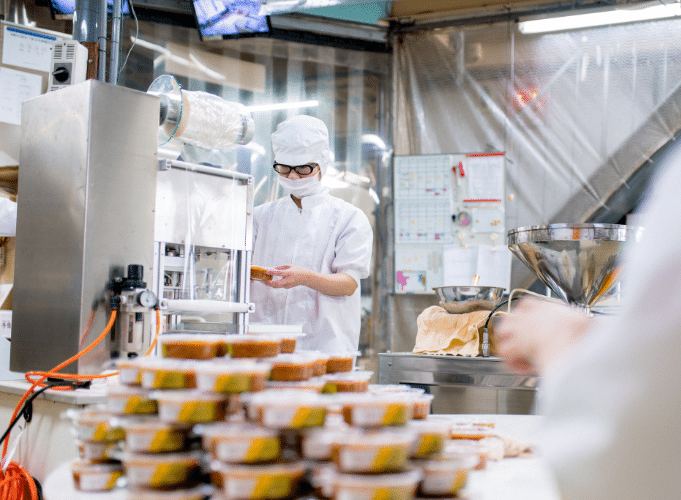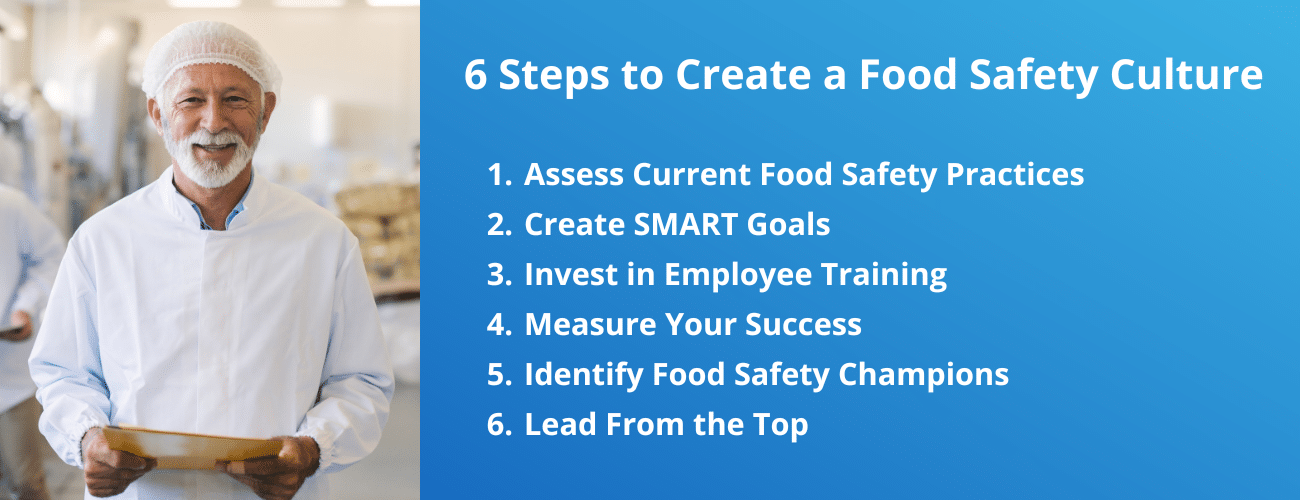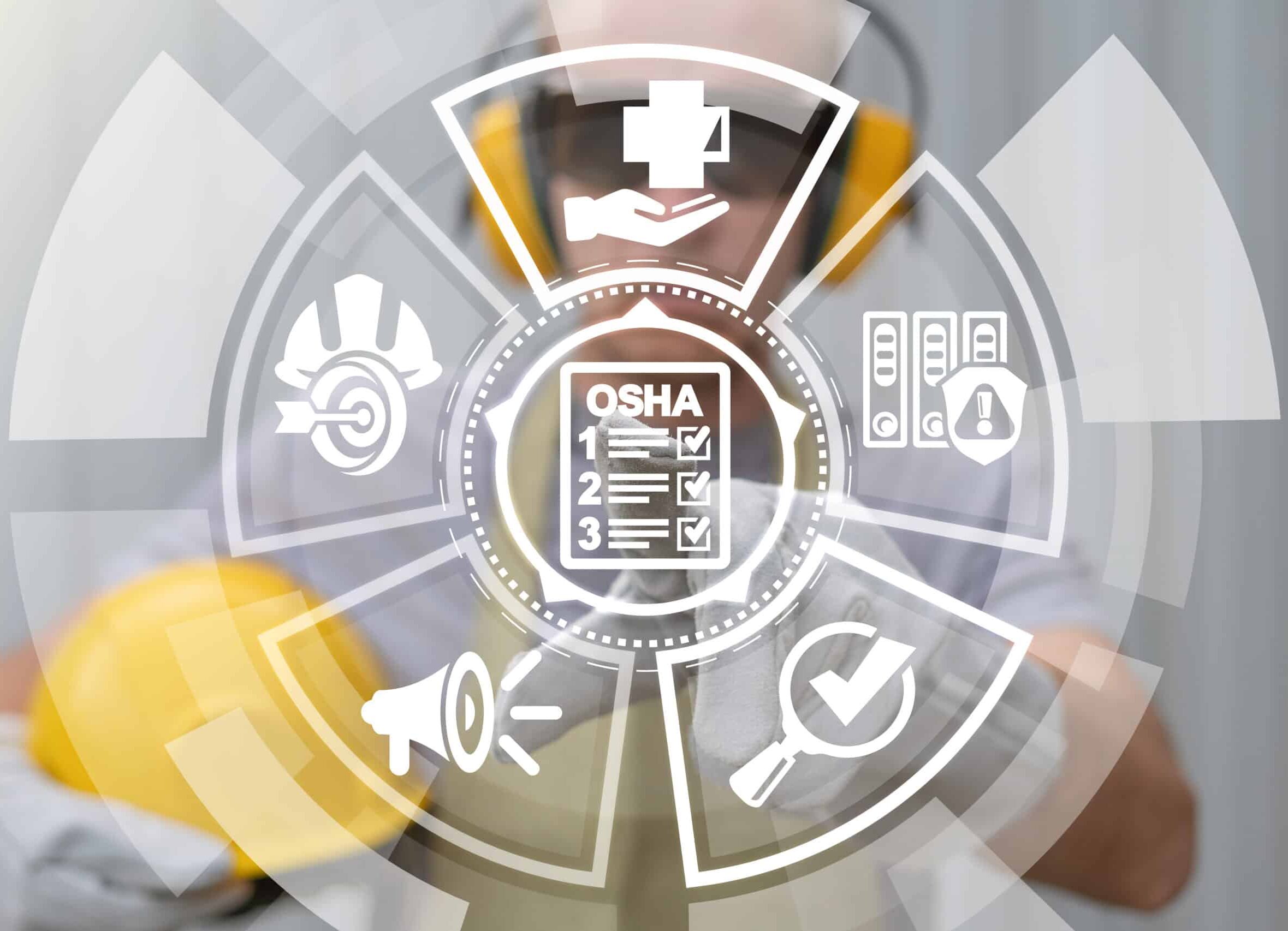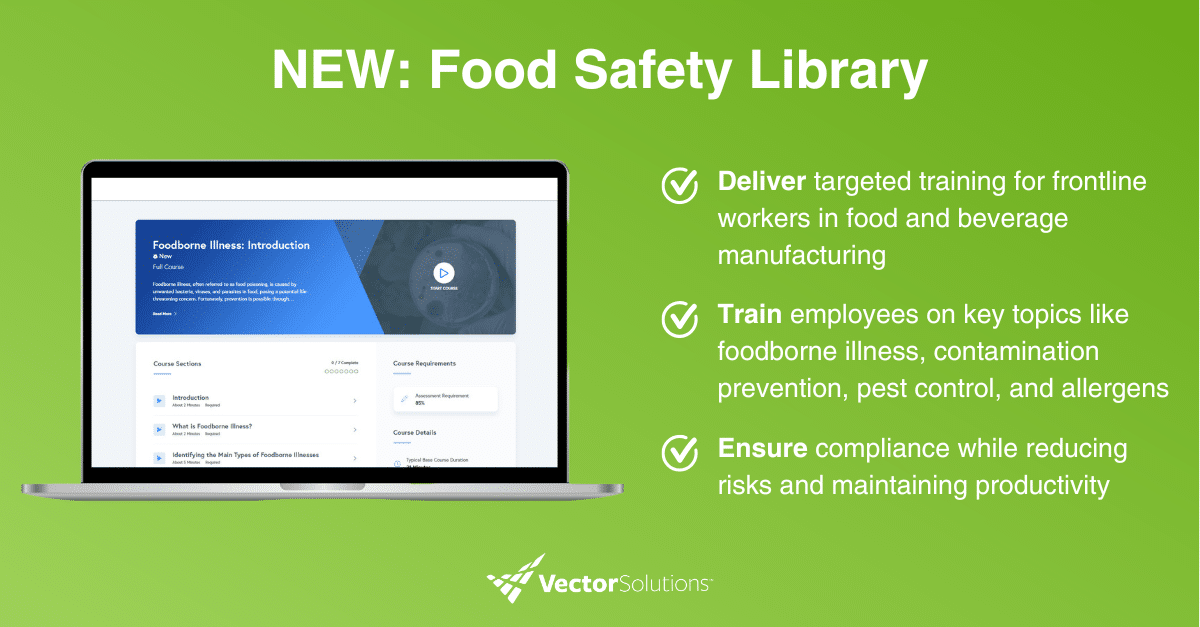November 13, 2024 9 min read

How to Create a Food Safety Culture
Industry:
Solution:

Creating a food safety culture is essential for any organization involved in food production. It involves a collective commitment to prioritize food safety in every action and decision, ensuring compliance, protecting consumers, and maintaining the company’s reputation. This blog explores the importance of food safety training, strong leadership, and setting clear food safety goals to build a proactive and resilient approach to food safety.
What is a Food Safety Culture?
A food safety culture is the collective mindset and behaviors of an organization that prioritize food safety at every level. It goes beyond mere compliance with regulations; it is about embedding food safety into the core values and daily practices of the company. This culture is reflected in how employees think about, approach, and handle food safety issues, ensuring that it is always a top priority.
In a strong food safety culture, everyone from top management to frontline workers understands their role in maintaining food safety. This shared responsibility helps to prevent foodborne illnesses, protect consumers, and uphold the company’s reputation.
By fostering a food safety culture, organizations can create a proactive environment where potential risks are identified and addressed before they become problems.

Why is a Food Safety Culture Important?
A strong food safety culture is essential for preventing foodborne illnesses and ensuring the well-being of consumers. According to the FDA, foodborne illnesses affect approximately 48 million Americans each year, leading to 128,000 hospitalizations and 3,000 deaths.
Creating a food safety culture offers numerous benefits for food and beverage manufacturers, including:
- Consumer Protection: Reduce the risk of foodborne illnesses, safeguarding public health.
- Regulatory Compliance: Ensure adherence to food safety regulations and standards, helping your company avoid legal issues and fines.
- Reputation Management: Maintain and enhance your company’s reputation by demonstrating a commitment to high food safety standards.
- Operational Efficiency: Promote consistent and proactive food safety practices, reducing waste and preventing costly recalls.
- Employee Engagement: Encourage a sense of responsibility and pride among employees and foster a collaborative and safety-focused work environment.
- Market Advantage: Build consumer trust and loyalty, potentially leading to increased market share and business growth.
By embedding food safety into the core values and daily practices of the organization, your organization can create a proactive environment where potential risks are identified and addressed before they become problems.
Complete Guide to Passing a Food Safety Audit
Explore strategies to prepare you to lead your organization through your next food safety audit, ensuring compliance and protecting consumer health.
Download Guide
6 Steps to Create a Food Safety Culture
Building a food safety culture involves a strategic approach that integrates food safety into every aspect of your organization. Here are six essential steps to guide you in creating a robust food safety culture.
Step 1: Assess Your Current Safety Culture
Start by thoroughly assessing your current food safety practices. This provides a baseline from which you can measure progress and identify areas needing improvement. Here’s how:
- Conduct Surveys and Interviews: Gather feedback from employees at all levels through anonymous surveys and one-on-one interviews. Ask about their perceptions of food safety practices, their understanding of safety protocols, and any concerns they might have. This helps you gauge the overall awareness and attitudes towards food safety within your organization.
- Review Safety Records and Incident Reports: Analyze past safety records, incident reports, and food safety audit results. Look for patterns or recurring issues that might indicate underlying problems in your safety culture. This data can provide valuable insights into areas where safety practices may be lacking.
- Observe Daily Operations: Spend time observing daily operations. Pay attention to how employees handle food, adhere to safety protocols, and respond to potential hazards. Observations can reveal discrepancies between documented procedures and actual practices.
- Evaluate Training Programs: Assess the effectiveness of your current food safety training programs. Determine if employees are receiving adequate training and if the training is being applied correctly in their daily tasks. Effective training is crucial for maintaining a strong safety culture.
Step 2: Create SMART Objectives
Once you have assessed your current safety culture, the next step is to set clear and actionable goals to drive improvement. Essentially, this helps define why you need a food safety culture and what it will help you to achieve.
Using the SMART criteria ensures that your objectives are well-defined and achievable. Here’s how:
- Specific: Your objectives should be clear and specific, leaving no room for ambiguity. Define exactly what you want to achieve and why it is important. For example, instead of saying “improve food safety,” specify “reduce the incidence of cross-contamination.”
- Measurable: Establish criteria for measuring progress and success. This could involve setting numerical targets or defining specific indicators of improvement. For instance, “reduce cross-contamination incidents by 20% within six months.”
- Achievable: Ensure that your objectives are realistic and attainable given your resources and constraints. Setting overly ambitious goals can lead to frustration and disengagement. Assess your current capabilities and set objectives that challenge yet are within reach.
- Relevant: Your objectives should align with your overall mission and the specific needs identified in your assessment. They should contribute directly to enhancing your food safety culture. For example, if training gaps were identified, an objective could be “implement a comprehensive food safety training program for all staff.”
- Time-bound: Set a clear timeline for achieving your objectives. This creates a sense of urgency and helps maintain focus. Specify a deadline, such as “within six months” or “by the end of the fiscal year,” to ensure that progress is tracked and evaluated in a timely manner.
Step 3: Invest in Employee Training
Investing in comprehensive employee training is crucial for fostering a strong food safety culture. Well-trained employees are more likely to understand and adhere to safety protocols, reducing the risk of foodborne illnesses and ensuring a safe environment for both staff and customers.
Here’s how to effectively invest in three types of employee training:
- Onboarding Training: Begin with thorough onboarding training for new hires, using competency assessments to get a baseline of employee knowledge to create more curated training to meet their needs and ensure compliance. Then use that knowledge to provide a structured learning path that covers all essential food safety protocols, tailored to the specific roles and responsibilities of new employees.
- Just in Time (JIT) Training: Implement Just in Time training to address specific food safety issues as they arise. This type of training is delivered exactly when it is needed, ensuring that employees receive relevant information at the most critical moments.
- Annual Refresher Training: Utilize microlearning techniques for annual refresher training. Breaking down training into small, manageable segments makes it easier for employees to absorb and retain information. And ensure employees never miss a training with automated training assignment in a learning management system (LMS).
By focusing on these three types of training, you can create a comprehensive and effective food safety training program that meets the needs of your employees and supports organizational goals.
Online Food Safety Training Courses
Enhance food safety awareness and build job skills for your frontline workers with courses developed by industry experts and aligned with the latest standards and guidelines in food safety.
View Courses
Step 4: Measure Your Success
Measuring the success of your food safety initiatives is essential to ensure that your efforts are effective and to identify areas for continuous improvement. This comes back to the SMART goals you set in step two and is about ensuring you’re reaching those objectives.
Here’s how to effectively measure your success:
- Conduct Regular Audits and Inspections: Conduct regular internal audits to assess compliance with food safety standards. These audits should be thorough and cover all aspects of your operations. And consider engaging third-party inspectors to provide an unbiased evaluation of your food safety practices. External audits can offer valuable insights and highlight areas that may need improvement.
- Incident Tracking and Analysis: Maintain detailed records of all food safety incidents, including near misses, with EHS Management software. Analyze these records to identify patterns and root causes. And then implement corrective actions based on incident analysis and track their effectiveness over time. This helps in preventing recurrence and improving overall safety.
Step 5: Identify Food Safety Champions
Identifying and empowering food safety champions within your organization is a powerful way to reinforce and sustain a strong food safety culture. These champions act as role models, advocates, and leaders in promoting food safety practices.
To find these champions, look for employees who consistently demonstrate a strong commitment to food safety. These individuals often go above and beyond in adhering to safety protocols and encouraging others to do the same. You can also gather feedback from supervisors to help identify these individuals.
Then you want to empower those champions and involve them in your food safety program. They can help provide feedback on processes and areas for improvement and they can be great peer leaders during in-person training sessions.
But don’t forget to recognize and reward these employees for going above and beyond and providing invaluable feedback. Whether it’s public acknowledgement or monetary incentives, make sure you’re properly compensating them for any additional time and effort.
Step 6: Lead from the Top
Creating a strong food safety culture starts and ends with leadership. When leaders prioritize and model food safety, it sets the tone for the entire organization. Encourage your leaders to:
- Demonstrate their commitment: Leaders should visibly demonstrate their commitment to food safety by actively participating in safety initiatives, attending training sessions, and following safety protocols themselves.
- Set clear expectations: By setting and enforcing clear food safety goals and policies, leaders can help employees understand what matters and what is expected of them.
- Provide resources: Allocate sufficient resources, including time, budget, and personnel, to support food safety initiatives, like training. This demonstrates that food safety is a top priority.
- Reward excellence: Leaders should recognize and celebrate achievements in food safety. This could be through awards, public acknowledgment, or other forms of recognition.
By leading from the top, you set a powerful example and create a culture where food safety is ingrained in every aspect of your organization.

Why Food Manufacturers Trust Vector Solutions for Online Training
Food and beverage manufacturers trust Vector Solutions for our comprehensive and up-to-date online training, which covers everything from basic food safety principles to advanced regulatory compliance.
Our training management platform’s flexibility allows employees to access training anytime, anywhere, making it easy to fit into busy schedules. We also streamline training management with easy course assignments and progress tracking, ensuring compliance and continuous improvement.
By choosing Vector Solutions, food manufacturers can ensure their employees are well-equipped to uphold the highest standards of food safety, protecting consumers and enhancing business efficiency.
Want to see it in action? Request a demo today.








